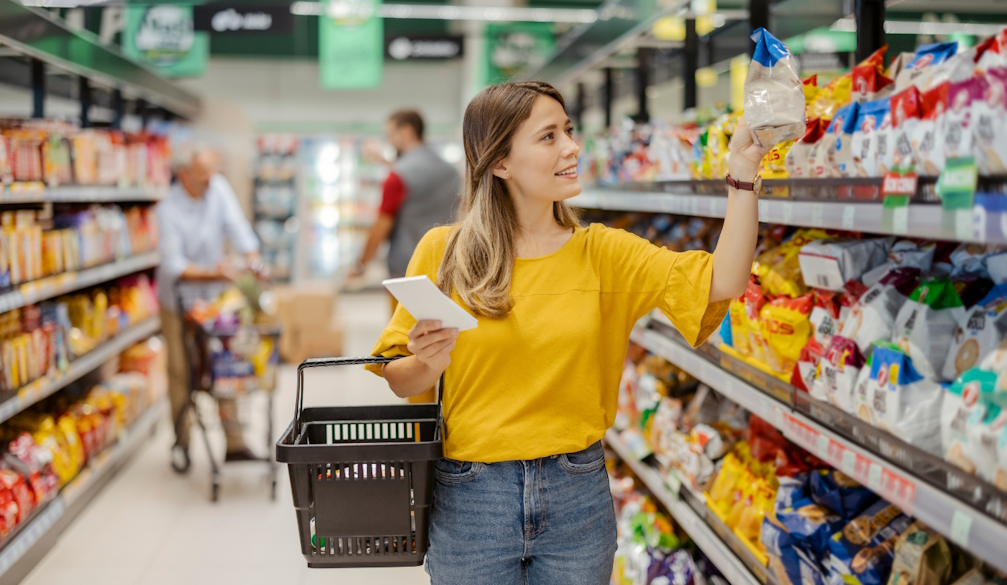Supermarket concentration benefits stores, not shoppers. It’s time to split Foodstuffs – not make it stronger
- Written by Lisa Asher, Retail Expert, PhD Candidate & Sessional Academic, University of Sydney

The proposed merger of Foodstuffs North Island and Foodstuffs South Island[1] raises the prospect of even less choice for New Zealanders in what is an already heavily concentrated market. But will regulators prevent it from happening?
New Zealand currently has just three major supermarket entities: the two Foodstuffs cooperatives (member-owned companies) and Australian-owned Woolworths. These three control 85% of the grocery market[2] and almost 100% of the supermarket sector.
The Commerce Commission will release its delayed decision on the proposed merger[3] in October.
Less choice in NZ than overseas
The dominance of Foodstuffs and Woolworths gives the New Zealand supermarket industry a concentration ratio of almost 100% – calculated by adding the top four firm’s market share of an industry.
By comparison, the supermarket sector concentration ratio in Italy is 58.3%, in Spain it’s 67.4%, in the United Kingdom it’s 61.2%, and in the United States it’s 58.5%. These lower ratios point to markets that are more competitive.
A recent OECD survey[4] has raised concerns over the concentration in the New Zealand market. And suppliers have warned they are being hurt by the dominance[5] of these retailers.
Research[6] has long shown higher levels of concentration[7] favour the companies dominating[8] the market to the detriment of consumers and competition[9].
Our research[10] supports this finding[11].
In 2022, the Commerce Commission released a report[12] on New Zealand’s grocery sector. It found competition was not working well for consumers in the retail grocery sector. Recommendations included establishing a dedicated grocery regulator to provide monitoring and oversight, which was done by the then Labour government last year[13].
To better balance the market, regulators need to ensure local markets are competitive. This will require not just the rejection of Foodstuffs’ merger but, also, the possible split or demerger of the existing entities.
The most logical step is split the Pak'nSave and New World brands, ensuring they are independent of each other.
Otherwise there is a risk of precedent being set, which establishes an example for other sectors and markets to follow. It also raises the question of the point of the market study, if – despite the knowledge of concentration – the market was allowed to concentrate further.
Research shows the high price we pay
New Zealand’s size and low population density are often blamed for higher food costs[14].
But our ongoing research[15] shows low population density in developed markets is not a predictor of supermarket market concentration.
Highly concentrated markets have lower store availability for consumers, driving up population per store and reducing choice.
New Zealand has four times more population per store than Germany, and more than two times the UK and US. New Zealand also has the highest revenue per store across 25 developed markets, ahead of the United States.
Foodstuffs North Island, for example, generates double the global average operating profit of supermarkets[16].
Individual store owners are benefiting from the lack of competition[17]. In 2018, three Foodstuffs supermarket owners entered the NBR rich list[18].
Anti-competitive claims against Foodstuffs
The proposed merger of the two Foodstuffs cooperatives is not the first time the company has joined together geographically disparate entities.
In 2013, Foodstuffs merged their Wellington and Auckland[19] regions to become Foodstuffs North Island. This merger concentrated an already small market further.
The cooperatives’ increased market and bargaining power after the 2013 merger has resulted in complaints from some suppliers[20] over Foodstuffs North Island’s tactics.
Despite being two separate entities, Foodstuffs has admitted to sharing information between its North and South Island entities[21]. And since 2020, Foodstuffs North Island and South Island have released joint annual corporate social responsibility reports.
In a submission on the merger to the Commerce Commission earlier this year, one industry insider claimed the two Foodstuffs cooperatives were behaving as an unofficial cartel[22]. Foodstuffs has rejected this claim[23].
But the commission has active fair trading investigations[24] into both Foodstuffs South Island and Foodstuffs North Island over pricing and promotional practices. It is also investigating Woolworths New Zealand for the same issues.
And the regulator recently filed proceedings[25] against Foodstuffs North Island, alleging that anti-competitive land covenants were lodged by the supermarket operator. The commission claims Foodstuffs did this with the purpose of blocking competitors from opening rival supermarkets at particular sites.
Splitting the Foodstuffs brands
New Zealand is not the only country facing increasingly concentrated supermarket sector, though it is, arguably, one of the worst.
In Australia, concerns have been raised about the dominance of Coles and Woolworths. These two companies control 65% of the grocery sector[26] between them. The Queensland Greens have called on the government to introduce a 20% cap on market ownership[27].
In May, the Australian government outlined a mandatory code of conduct for supermarkets[28] to address anti-competitive behaviour. It is clear Australia is attempting to prevent further concentration of its grocery market, highlighting just how much of an outlier New Zealand is.
In contrast, the UK’s two largest supermarkets, Tesco and Sainsbury’s, control just 42.2% of their market[29]. An investigation into rising food prices[30] by the country’s competition watchdog found inflation was not driven by weak retail competition.
Operating profits in the sector in the UK fell 41.5% in 2022-23, with average operating margins falling to 1.8% from 3.2%. This suggests retailers’ rising costs were not passed on in full to consumers.
The UK grocery sector shows how competitive a grocery sector can be – if consumers and regulators are vigilant. But the merger of the two Foodstuffs cooperatives is taking New Zealand in the opposite direction.
Instead, the commission should reject the merger. It should also look at the demerger or divestment of the Foodstuffs banners to foster real competition and a better outcome for consumers.
References
- ^ merger of Foodstuffs North Island and Foodstuffs South Island (www.rnz.co.nz)
- ^ 85% of the grocery market (www.stuff.co.nz)
- ^ delayed decision on the proposed merger (newsroom.co.nz)
- ^ recent OECD survey (read.oecd-ilibrary.org)
- ^ hurt by the dominance (newsroom.co.nz)
- ^ Research (doi.org)
- ^ higher levels of concentration (doi.org)
- ^ favour the companies dominating (doi.org)
- ^ to the detriment of consumers and competition (doi.org)
- ^ research (comcom.govt.nz)
- ^ supports this finding (comcom.govt.nz)
- ^ released a report (comcom.govt.nz)
- ^ last year (www.newshub.co.nz)
- ^ blamed for higher food costs (www.1news.co.nz)
- ^ research (www.unsw.edu.au)
- ^ double the global average operating profit of supermarkets (comcom.govt.nz)
- ^ benefiting from the lack of competition (www.stuff.co.nz)
- ^ NBR rich list (www.stuff.co.nz)
- ^ Foodstuffs merged their Wellington and Auckland (www.thepress.co.nz)
- ^ some suppliers (comcom.govt.nz)
- ^ sharing information between its North and South Island entities (comcom.govt.nz)
- ^ an unofficial cartel (comcom.govt.nz)
- ^ rejected this claim (www.thepost.co.nz)
- ^ commission has active fair trading investigations (newsroom.co.nz)
- ^ filed proceedings (comcom.govt.nz)
- ^ control 65% of the grocery sector (www.abc.net.au)
- ^ 20% cap on market ownership (www.theguardian.com)
- ^ mandatory code of conduct for supermarkets (theconversation.com)
- ^ control just 42.2% of their market (www.kantarworldpanel.com)
- ^ investigation into rising food prices (www.reuters.com)
Authors: Lisa Asher, Retail Expert, PhD Candidate & Sessional Academic, University of Sydney














